Taking a look at Thin Mini-ITX AM4 motherboards
Thin Mini-ITX standard was created by Intel for small form factor and integrated PCs. The AMD-based systems were absent from this form factor but Asrock and some OEMs did venture into it with the A320 chipset supporting early Zen APUs. Let's take a look at such OEM Thin Mini-ITX board - Quadro A4-320.
Thin Mini-ITX standard
In simple terms Thin Mini-ITX is a Mini-ITX board that is powered by an external 19V power brick
(no ATX power supply) and has a height limit of around 25-30 mm. If you would take a look at Intel design guide you would find a lot of requirements/good practices for this standard
in terms of connectivity, I/O placement and more. Intel sees Thin Mini-ITX boards as the building blocks of:
- All In One (AIO) PCs
- Stackable home theater PC to be size compatible with the standard width of AV components such as DVD players and receivers
- VESA mountable Thin PC
- Digital signage PC (Built inside or behind a TV or other display)
Some All-In One PCs do actually use thin mini ITX boards and you sometimes can find an Onda, Medion Akoya, or just no-name board on the second-hand parts market. There are also Thin Mini-ITX boards for consumers but lately, they have been superseded (to some extent) by nettops (like Intel NUC form factor).
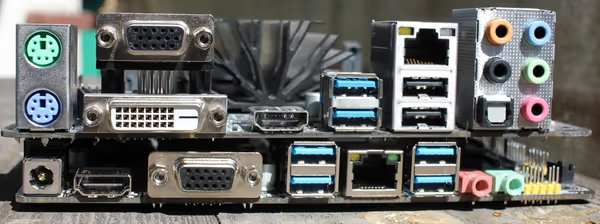
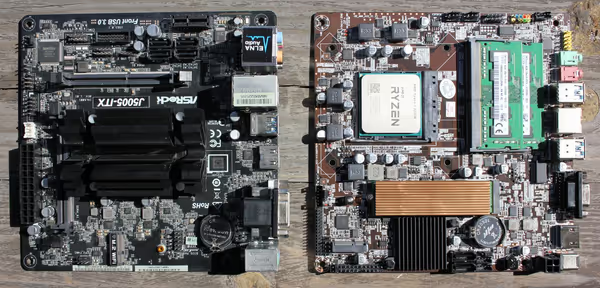
Asrock A320TM-ITX
ASrock seems like the only popular motherboard vendor that released an AM4 Thin Mini-ITX board for consumer and OEM markets. It supports Picasso, Raven Ridge, and Bristol Ridge APUs - up to 65W TDP. If you would take a look at the board you can see a second HDMI port on the side which was likely intended for some AIO usage. 30-pin LVDS connector is another Thin Mini-ITX recommended connector and can drive displays up to 1080p 60Hz:
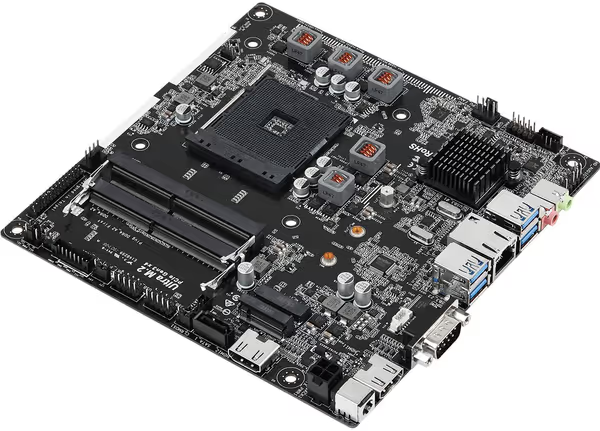

As AMD did not release Zen 2 APUs for consumers on the DIY market there was likely no reason to release a board with a newer chipset that would support them. As of the time of writing this article, there are not AM4 Thin Mini-ITX boards with a chipset other than A320 so no support for Zen 2 or newer.
Quadro A4-320
As AMD did not release Zen 2 APUs for consumers on the DIY market there was likely no reason to release a board with a newer chipset that would support them. As of the time of writing this article, there are no AM4 Thin Mini-ITX boards with a chipset other than A320 so no support for Zen 2 or newer.
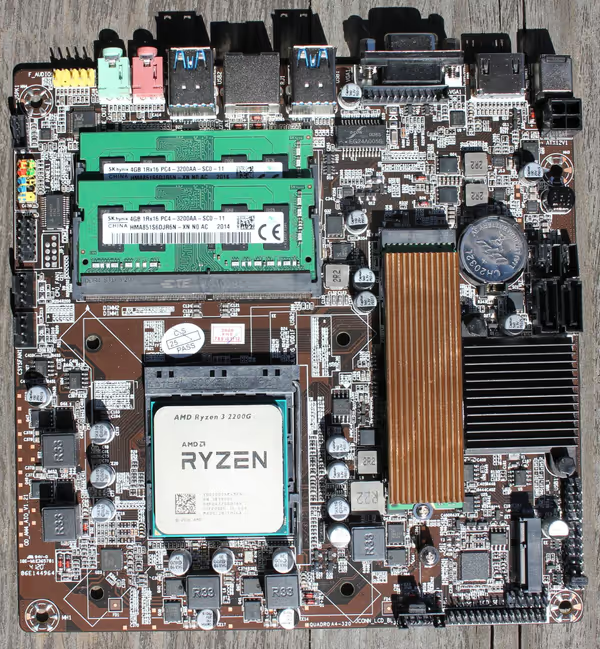
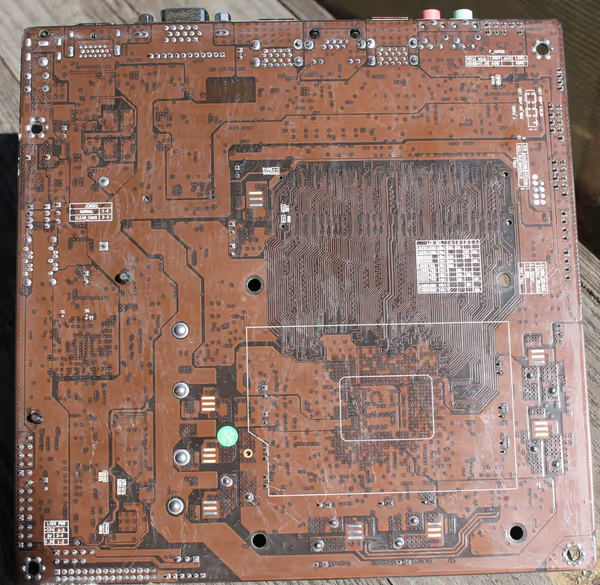

The board has 2 SATA ports with custom SATA power connectors (only one matching cable in the box) due to no ATX power supply in the system. One NVMe drive and a WiFi/BT card can be installed as well. The system is powered by a 19V power adapter via the barrel plug on the back or via an internal 12V ATX connector for integrated systems.

The board worked as expected, but during testing the M.2 connector soldering broke off from one side preventing M.2 from working (re-soldering required). The BIOS is also quite basic without many options.
In terms of power draw I used a lab DC power supply set to 19V. When off the 2200G system (2 SO-DIMMs, USB keyboard and mouse, NVMe drive, Akasa cooler) draws 0,57W. Idle power draw was 22,8W, during the Tesseract shooter benchmark it rose to 64.6W, and during Kernel compilation up to 74.1W.
AM4 with Intel coolers - oddities of Thin Mini-ITX
Thin Mini-ITX is an Intel standard and thus thin coolers or even cases were designed around Intel 115X systems. Due to this both AM4 Thin Mini-ITX boards are not compatible with AM4 coolers but instead use the Intel 115X coolers - and if you use a Thin Mini-ITX case you can only use coolers that have around 20-25mm of height so there is a reason for this change. Such low-profile coolers are mostly made by Akasa but you will find a few other brands as well.
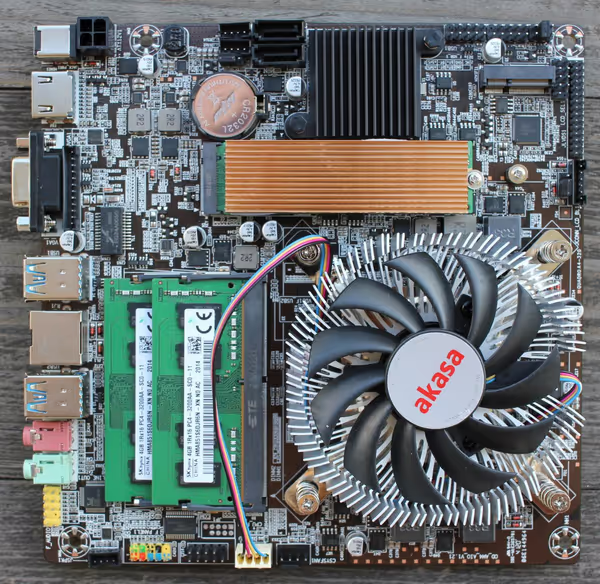

Akasa AK-CC7129BP01 cooler is rated for 73W TDP CPUs and the sheet states 30.75 dBA as the max noise level it can produce. The height is only 21mm which allows it to fit in cases designed for this form factor:
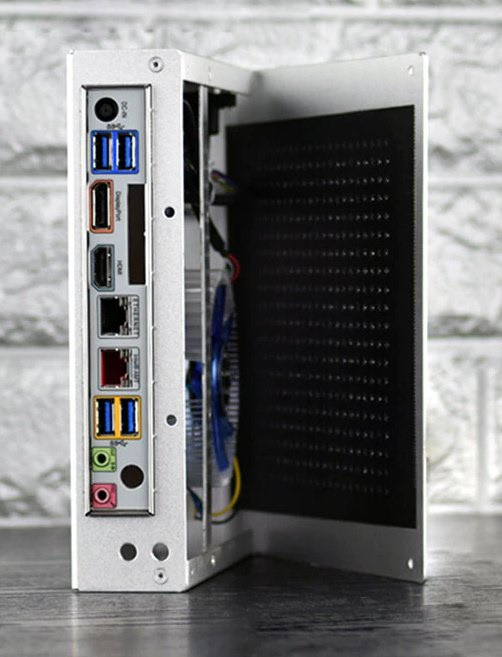
Akasa and a few other companies also make fanless cases where the case becomes the radiator:
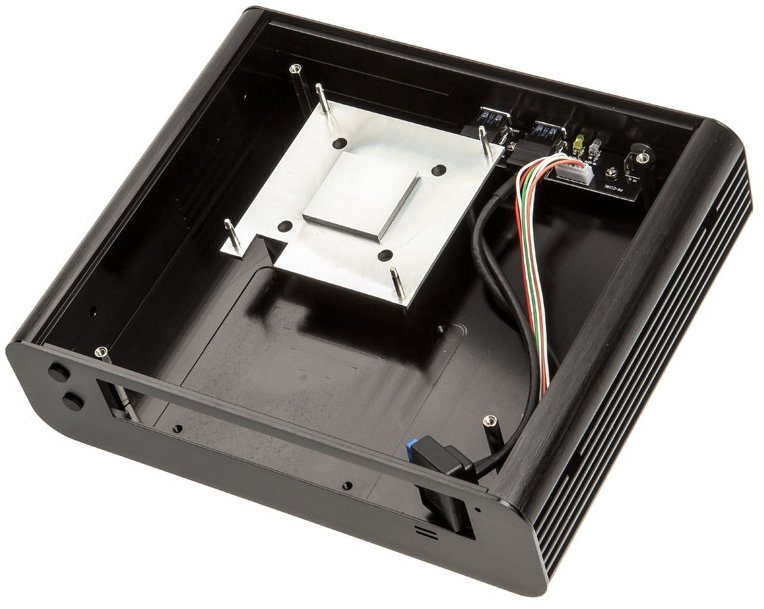
As you can see the whole ecosystem revolves around small form factor systems that could be used as media PCs and alike.
AM4 vs 115X coolers in practice
A lot of 115X coolers can have a small round cold plate which limits the contact surface area:
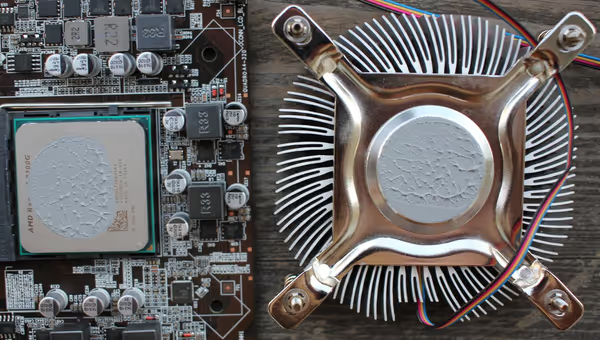
This could limit the cooling capabilities but there are alternatives with bigger rectangular cold plates as well - so if you want optimal cooling you can go through a few shops until you find one.
What's questionable is mounting pressure. When I used the Intel stock cooler the pressure was kind of meh as the Arctic Silver Ceramique 2 thermal paste was barely squished
. When I mounted a basic tower cooler that used a backplate the pressure looked much better:
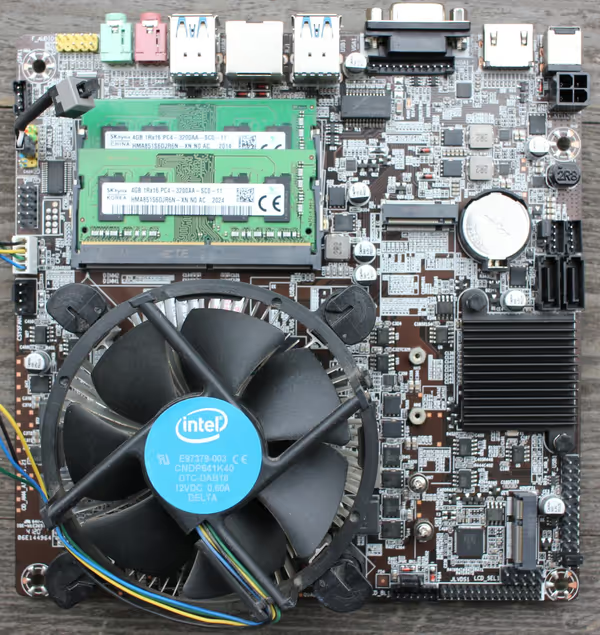
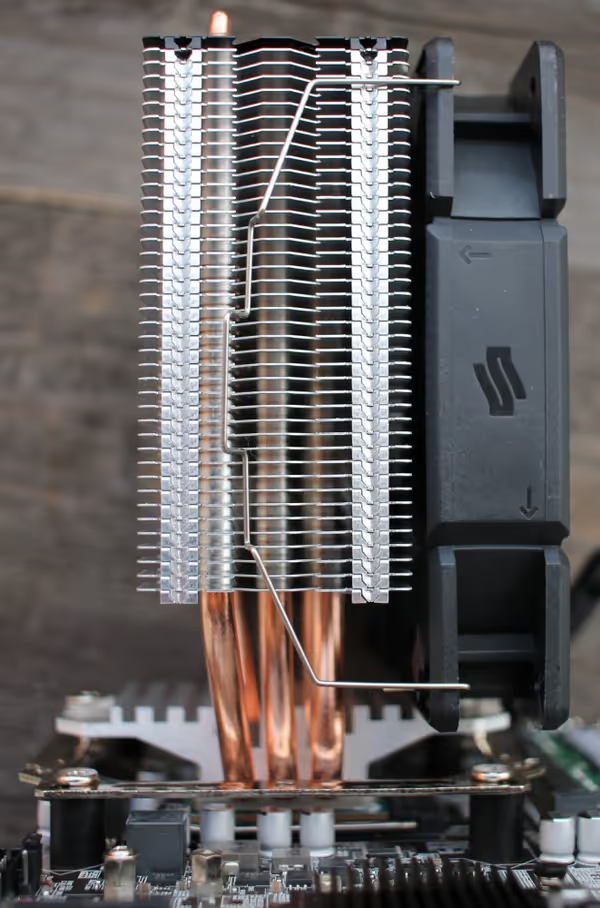
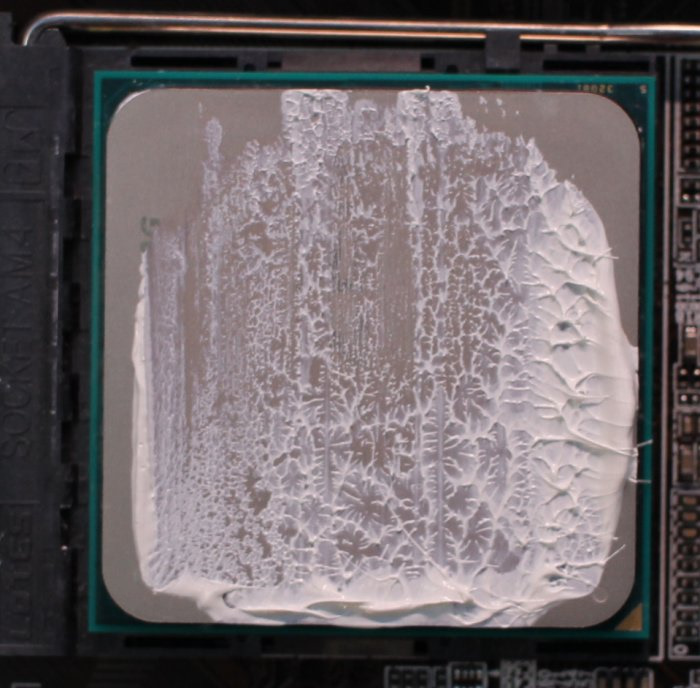
When building a Thin Mini-ITX system, especially with the AM4 socket it's likely better to go for a cooler that uses a backplate. That way you can add washers to increase the mounting pressure if needed.
If we look at the thermals for Ryzen 3 2200G (4C/4T 3,7GHz single core boost, 3,65GHz all core boost) the Akasa AK-CC7129BP01 could only manage 3496 MHz in all-core stress test while hitting the thermal limit. The Spartan 4 tower cooler allowed for 3672 MHz all core clock speeds while not hitting the thermal limit of the Ryzen 2200G:
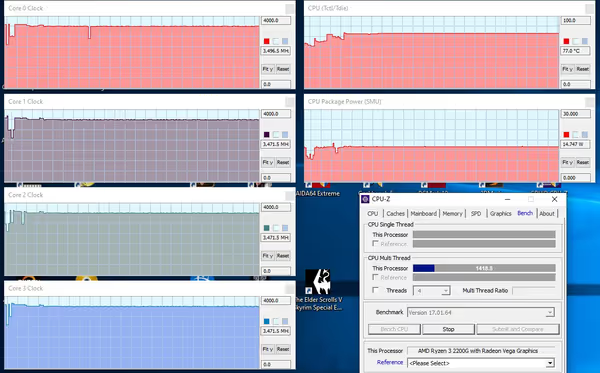
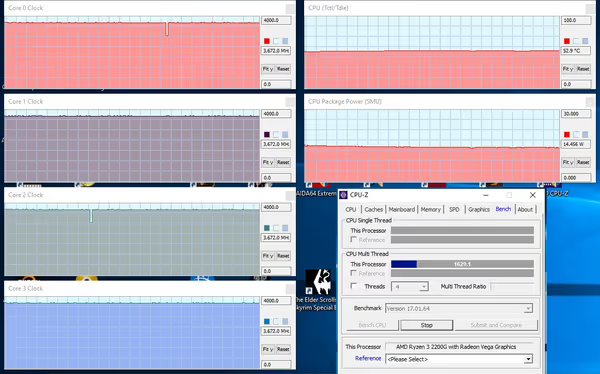
You can't use a tower cooler in a Thin Mini-ITX system, but it shows that a super small cooler with a small fan won't be the top performer for high APU loads. Much larger mass fanless cases that function as radiators could be better but that depends on the ambient temperature and ambient airflow around the device.
AMD APUs and SO-DIMM memory
Due to space and height restrictions Thin Mini-ITX boards use horizontally oriented SO-DIMM memory slots. This isn't much of a problem for Intel CPUs but AM APUs can benefit from high-end DDR4 memory. A Zen 2 APU like 4650G can handle 4600 MT/s CL16 (or better) with memory to Infinity Fabric clocks at a 1:1 ratio (whereas desktop Zen 2 and Zen 3 max out for a 1:1 ratio at around 3800 MT/s RAM). This boosts GPU and CPU performance noticeably. Having to use JEDEC mobile SO-DIMM RAM kits means we are limited to at best 3200CL22 kits (and some better
ones may be 1.35V instead of 1.2V kits which likely won't be compatible).
If you want the best APU gaming system then Thin Mini-ITX likely will not provide it. You will pay extra for the case and board (assuming there will be such a board) and then you will have to use less RAM. In a standard mini-ITX system, you will likely pay a bit less for the board and case (unless it’s a G.A.M.I.N.G RGB board), while paying more for a better RAM you will be able to get more performance from and better cooling at a somewhat bigger form factor (height).
To compare Ryzen 3 2200G performance on A320 Thin Mini-ITX board and B350 standard board I ran few Phoronix benchmarks on Ubuntu Linux - 2105153-HA-2105156HA77. I used 2x4GB 3200CL22 SO-DIMM RAM and 2x8GB 3200CL22 JEDEC desktop RAM (while you could try a much better kit with an XMP profile). The 2200G is a bit old and overall did not use the highest presets for both JEDEC RAM kits. The SO-DIMM was running at 2400 CL17 while the desktop kit clocked at 2800CL19 (JEDEC RAM kits have few profiles and the system chooses
the highest it can handle - it's not like XMP where you can choose a profile).
The results show around a 15% performance uplift for game/game-alike benchmarks (Tesseract shooter, Unigine Superposition, and Valley) on the desktop board. CPU compute benchmarks (Kernel compilation, Blender rendering, BZIP2 compression) showed around 7% uplift. On Windows, both boards showed the same behavior (clocks, power) under the CPU-Z stress test.


And in my previous article about comparing desktop and mobile RAM I've tested this board and a 2400CL17 desktop RAM kit to see if there would be a difference for ~same timings:

Aida64 showed a bit lower latency and better transfer speeds for the desktop DIMM configuration.


Here it's clear that the A320 with SO-DIMM memory performs worse in World of Warcraft than a B450 board with desktop memory.
Summary
Thin Mini-ITX is a handy standard for fanless and very small systems. If AMD launches Zen 2 and/or Zen 3 widely for the DIY market then maybe we will see a new Thin Mini-ITX board for them. Combined with a fanless radiator case it would be an excellent media/always-on system. For pure gaming on the integrated graphics likely standard Mini-ITX will be better - for cooling and desktop RAM.
Nettops with like 4700/4800U (Asus PN40) or 4800H (Aliexpress) are available but those usually use laptop-style cooling which can be more noisy than even Thin Mini-ITX solutions. The availability and ease of use are better but depending on the design the thermals and noise can be worse.
For makers and when prototyping some devices Thin Mini-ITX can offer some extra flexibility like an LVDS connector for displays and simpler power delivery than a standard ATX-based motherboard. There are x86 small single-board computers (aside from ARM ones) but those tend to be much more expensive and rather limited in terms of I/O and features.
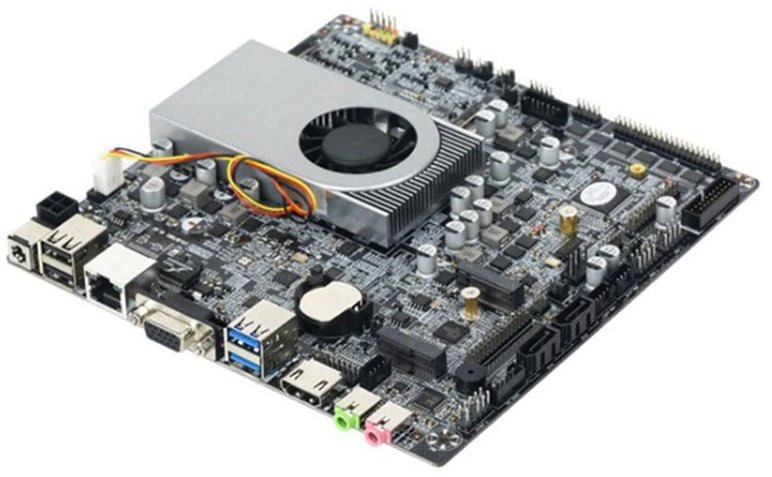
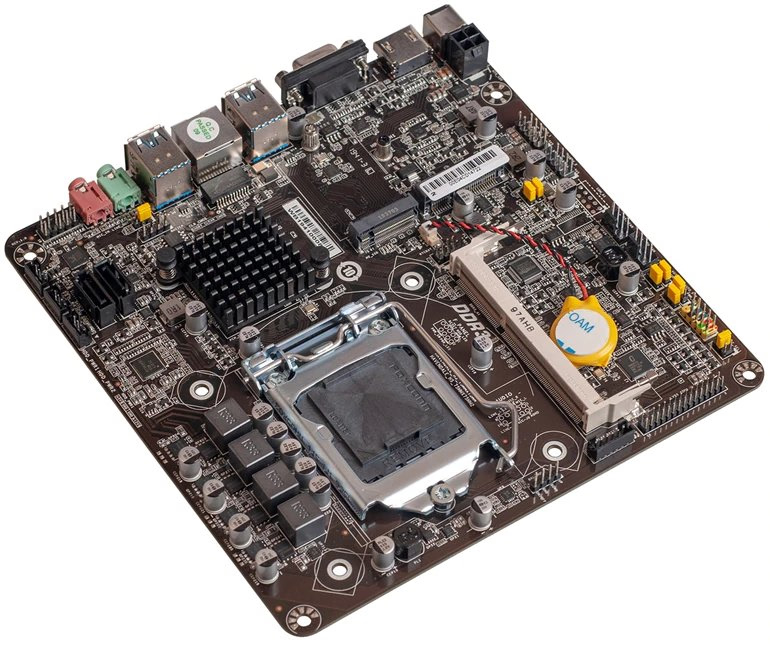
Comment article